CuriosiD: How did Michigan get the Uniroyal Giant Tire on I-94? And what’s it like inside?
John Filbrandt September 14, 2023In this episode, we go the extra mile to learn about the history and structure of the Giant Tire in Allen Park.
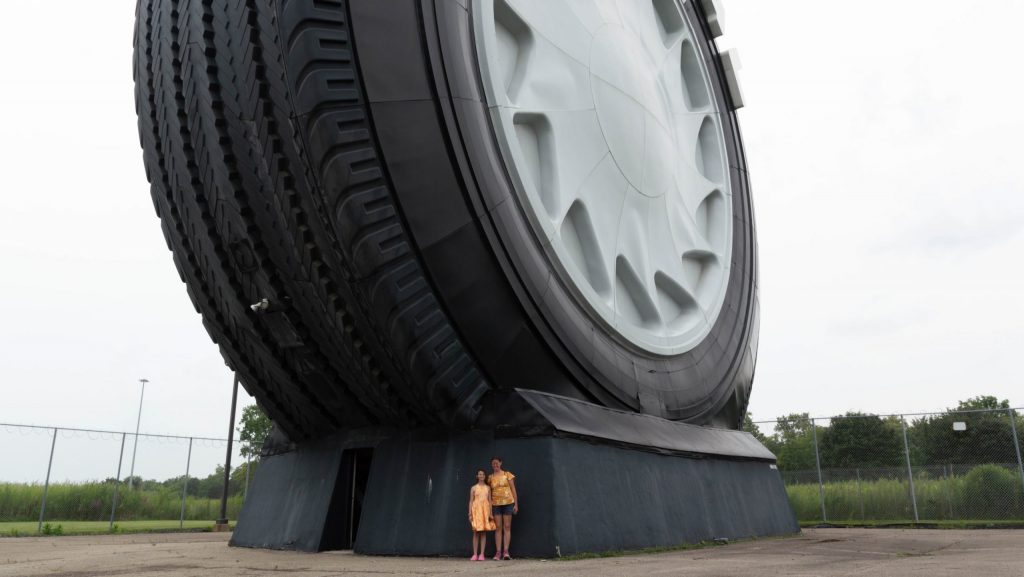
Listener Valerie Brenner (right) and her daughter Annika pose by the Giant Tire.
WDET’s CuriosiD series answers your questions about everything Detroit. Subscribe to CuriosiD on Apple Podcasts, Spotify, NPR.org or wherever you get your podcasts.
In this episode of CuriosiD, we answer two questions about the Giant Tire:
“How did it get to Allen Park? And is it a real tire?”
The short answers
The Uniroyal Giant Tire is not a real tire, but a huge replica made of fiberglass. It was originally designed for the 1964 New York World’s Fair as a Ferris wheel, carrying people to the top in red gondolas for 50¢.
Uniroyal moved the outer tire-shaped shell in 1966, to their Midwest sales office in Allen Park. Steven Frey, author of the book “The Giant Tire: From New York World’s Fair to Detroit Landmark” says its size and placement on the I-94 freeway made it even more famous.
“Well, look at the thing, it’s ginormous. It’s one of those things you just can’t miss. You can’t unsee it, it’s impossible to miss driving down the freeway,” Frey says. “I defy you to find anyone that has taken the trip from the airport to downtown and passed by the tire and not remembered seeing it. It’s just a big, big item that puts a mark in your brain that you just can’t get out.”
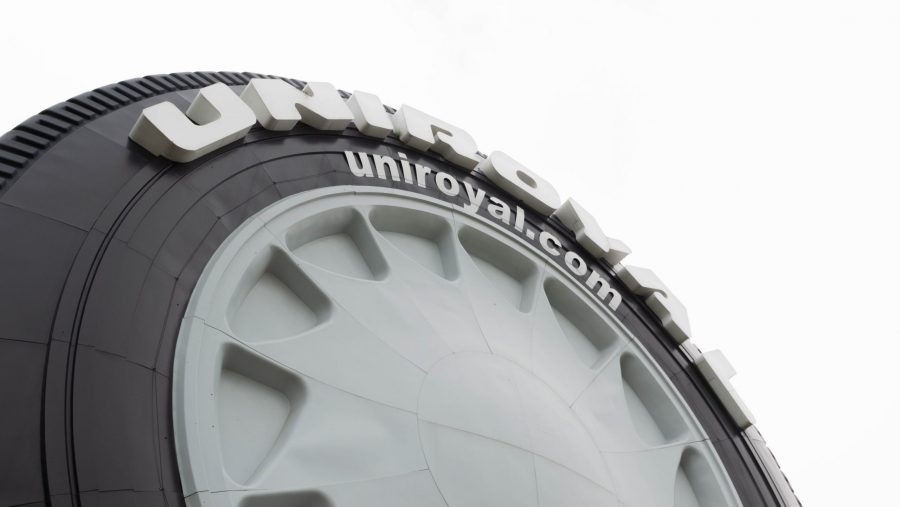
A trip to the fair!
Planners of the 1964 New York World’s Fair wanted the tire industry to be represented in the transportation section. Someone concocted the idea of a tire-shaped Ferris wheel and set out to find a corporate sponsor.
U.S. Rubber, soon to be called Uniroyal, stepped in to sponsor the attraction with a few requirements, Frey says.
“[Uniroyal] wanted to be the only tire manufacturer represented at the fair,” Frey says. “And they also did not want any other Ferris wheel at the fair. So they got the exclusive rights to be the only tire manufacturer and the only Ferris wheel.”
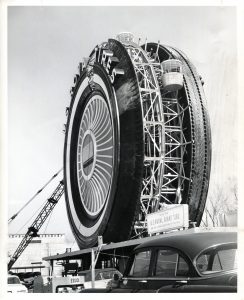
The Giant Tire was designed as a moving advertisement for Uniroyal tires and all their other products, Frey says. It was modeled after Uniroyal’s top-of-the-line tire and built using many other Uniroyal products: polyester resin covering the tire’s exterior, gondola seats covered with a vinyl-like product called Naugahyde, even the floors of each cabin were carpeted with Uniroyal’s nylon product.
“And so when you’re standing in line, looking at this tire, you’re handed all these brochures, or you saw display cabinets to talk about all the products that they sell around the world and you’re looking at an example of all the products in use,” Frey says. “So it was really a showcase to show all of their products.”
All sponsors were required to remove their attractions after the fair, and Uniroyal didn’t know what to do with a giant tire, Frey says.
After attempts to give the tire away, the Ferris wheel components went to an amusement park in New Jersey. The tire-shaped outer shell was loaded onto 22 semi trucks and hauled to Uniroyal’s Midwest sales office in Allen Park, Mich.
“And if you think about where would you put a giant tire in the Detroit area for advertising purposes, I don’t think [Uniroyal] could have picked a better spot,” Frey says.
Allen Park, Michelin
Michelin purchased the Uniroyal brand and Giant Tire in 1990, according to Uniroyal brand director Michelle Grim.
“It’s a landmark and represents the Uniroyal brand well within the city,” Grin says.
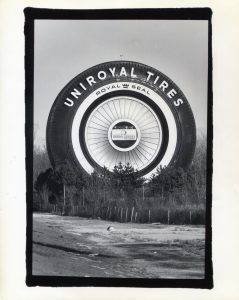
It’s also going to be here to stay for years to come. In 2003, the Giant Tire underwent a $1 million renovation project which replaced steel beams and added more supports.
When Michelin first purchased the tire, Frey says the company considered tearing it down. Contractors responsible for maintaining the tire said that would be a mistake.
“The few people that say it’s an eyesore are greatly outnumbered by the people who absolutely love it,” Frey says.
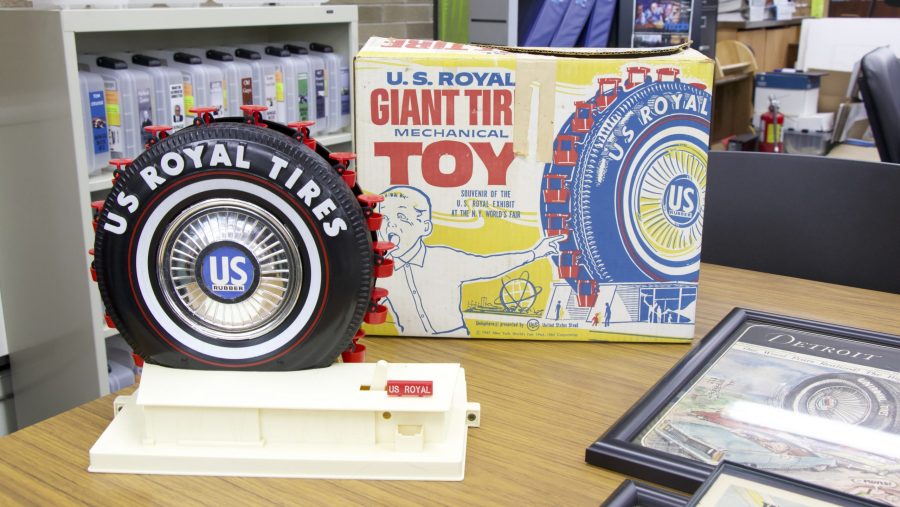
Inside the Tire
Frank Artman says he’s been looking after the tire for over 25 years. He’s here to give listener Valerie Brenner, her daughter Annika and the CuriosiD team a tour of the Giant Tire.
“[Michelin] told me they were grateful I was doing this because I kept an eye on them. I said, ‘How about some free tires?’ And they said, ‘We don’t do that,’” Artman says while laughing.
Valerie and her daughter enter the Giant Tire through the door in its base first. Inside, scaffolding supporting the tire-shaped shells stretches 80 feet to the ceiling. To change the red aircraft anti-collision light on top, an employee comes periodically to climb the metal ladders, with landings about every 10 feet.
“I thought it was going to be a real tire with rubber,” Valerie says while we’re inside. “It’s like a giant skeleton. It’s bonkers. It’s huge. It’s like a roller coaster… It’s very tall and very insane that somebody would climb all the way up. It’s not what you think at all.”
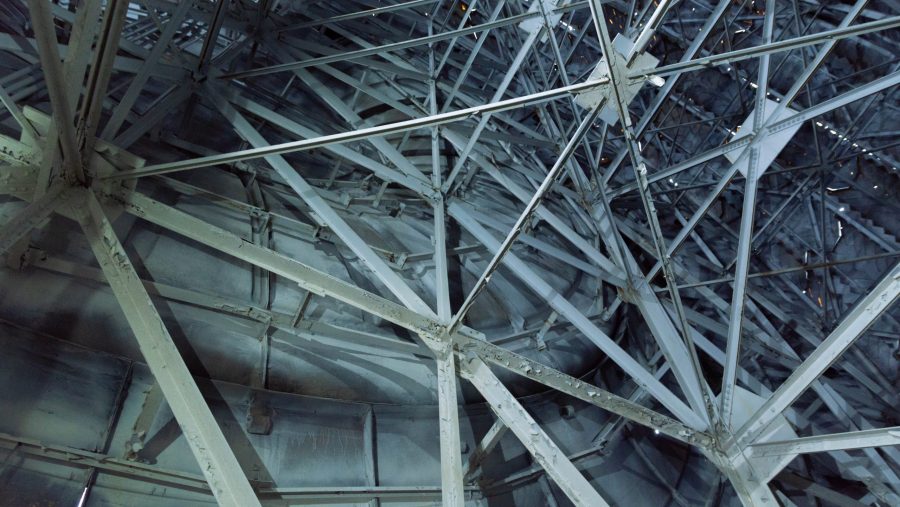
People still wonder if the tire will ever be restored to its original vision as a ferris wheel. Valerie says a lot of kids would be lined up to ride it if that happened.
“They should make it again because the kids everywhere in Detroit love this,” Valerie says. “The little kids love it. They go crazy when they drive past it.”
While the Giant Tire has stopped giving rides, it still finds a way to spark joy in grown-ups and kids alike.
Web exclusive: Tire satire
The North American International Auto Show is taking place now through Sept. 24. It’s a time for car fanatics to admire the industry’s innovation and history. A part of that history is tires.
“People would post things on social media, talking about the tire as if they really knew the facts, but it turned out it was only what they had heard,” Frey says. “So there’s a lot of hearsay and what they call now misinformation about the tire.”
Frey says the biggest rumor surrounding the Giant Tire was that it rolled across I-94 and caused a traffic jam. This rumor started from a satirical story published in the Detroit Free Press on March 31, 1974 — the day before April Fool’s Day.
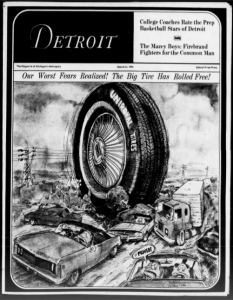
In the story titled “Our Worst Fears Realized! The Big Tire Rolled Free,” the Uniroyal Giant Tire — Uni — grows jealous of the Goodyear Blimp and decides to break away.
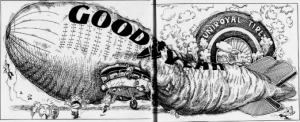
Frey says it would be impossible for the Giant Tire to roll because it’s a tire-shaped building, not a real tire.
“It’s a building that happens to be circular. If you go inside, you’ll see it’s got pilings, and I believe the actual structure goes down 15 feet underground,” Frey says. “It’s a steel building. So if it were to break loose, it would just topple over and crumble. There’s no way it could roll.”
While the Detroit Free Press wrote a compelling account of the tire rolling free, the story is, of course, entirely fiction. It’s never happened in real life.
About the listener
Valerie Brenner grew up in Royal Oak and now lives in Grosse Pointe Park.
“I knew about this tire my entire life,” Brenner says. “And I heard so many different stories about it.”
She says she always thought it was a real tire or part of a larger project, maybe even for a giant vehicle. Her daughter Annika played softball near the Giant Tire, sparking her own curiosity.
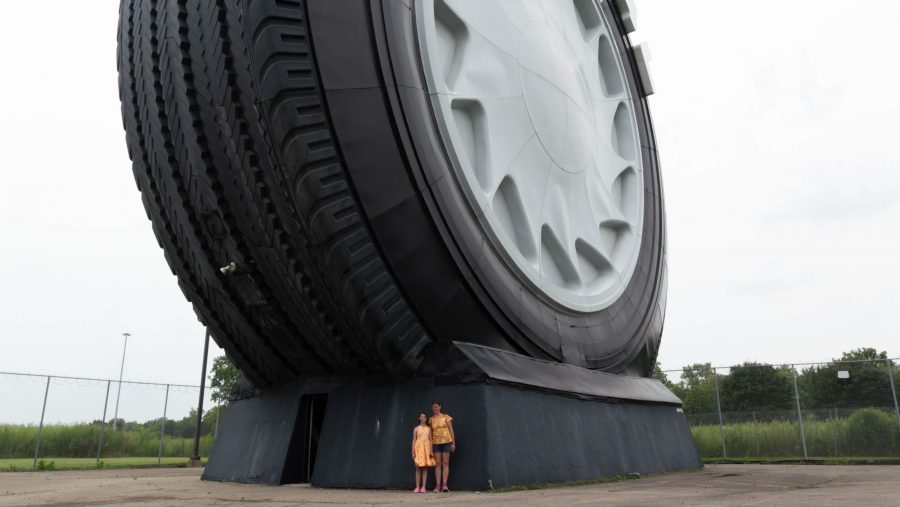
We want to hear from you!
Have a general question about Detroit? Ask us here or fill out the form below.
More from CuriosiD:
- Why does DTW have those giant fans?
- Who is painting the “Corn Real Good” signs?
- What is on Boblo Island today? And what happened to the Boblo boats?
Support the podcasts you love.
One-of-a-kind podcasts from WDET bring you engaging conversations, news you need to know and stories you love to hear.
Keep the conversations coming. Please make a gift today.
Author
-
Jack Filbrandt is an assistant producer on WDET's daily news, arts and culture program, The Metro. He grew up on Lake Michigan and has called Detroit home for seven years. He's also a Detroit Documenter, covering local government meetings in the city. He previously worked for Wayne State's student newspaper, The South End, and The Battering Ram.
